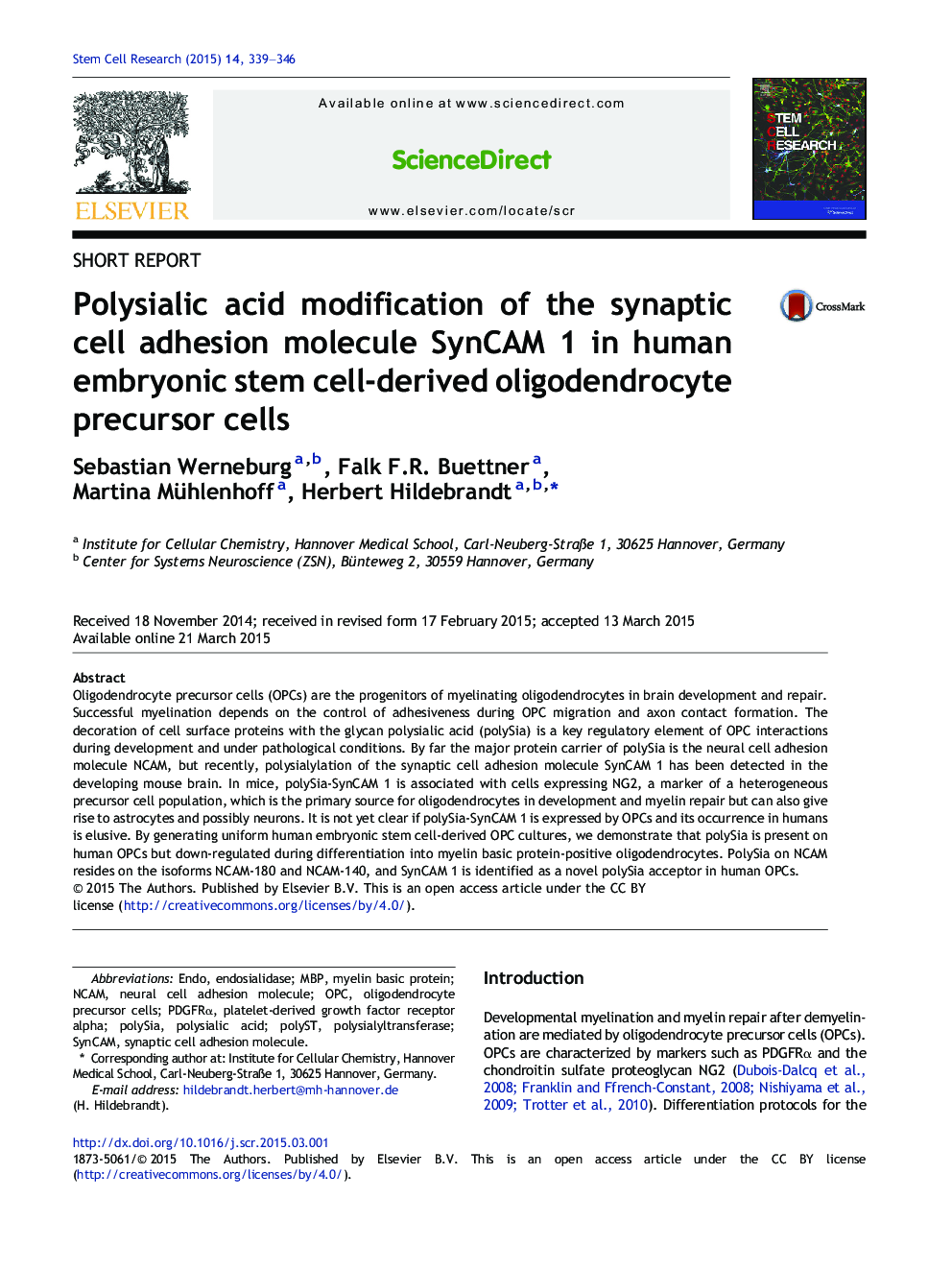| Article ID | Journal | Published Year | Pages | File Type |
|---|---|---|---|---|
| 2094193 | Stem Cell Research | 2015 | 8 Pages |
•hESC-derived OPCs express polysialic acid (polySia).•NCAM-180 and NCAM-140 are polySia acceptors in hESC-derived OPCs.•PolySia-SynCAM 1 is identified in hESC-derived OPCs.•PolySia is down-regulated during oligodendrocyte maturation.
Oligodendrocyte precursor cells (OPCs) are the progenitors of myelinating oligodendrocytes in brain development and repair. Successful myelination depends on the control of adhesiveness during OPC migration and axon contact formation. The decoration of cell surface proteins with the glycan polysialic acid (polySia) is a key regulatory element of OPC interactions during development and under pathological conditions. By far the major protein carrier of polySia is the neural cell adhesion molecule NCAM, but recently, polysialylation of the synaptic cell adhesion molecule SynCAM 1 has been detected in the developing mouse brain. In mice, polySia-SynCAM 1 is associated with cells expressing NG2, a marker of a heterogeneous precursor cell population, which is the primary source for oligodendrocytes in development and myelin repair but can also give rise to astrocytes and possibly neurons. It is not yet clear if polySia-SynCAM 1 is expressed by OPCs and its occurrence in humans is elusive. By generating uniform human embryonic stem cell-derived OPC cultures, we demonstrate that polySia is present on human OPCs but down-regulated during differentiation into myelin basic protein-positive oligodendrocytes. PolySia on NCAM resides on the isoforms NCAM-180 and NCAM-140, and SynCAM 1 is identified as a novel polySia acceptor in human OPCs.
